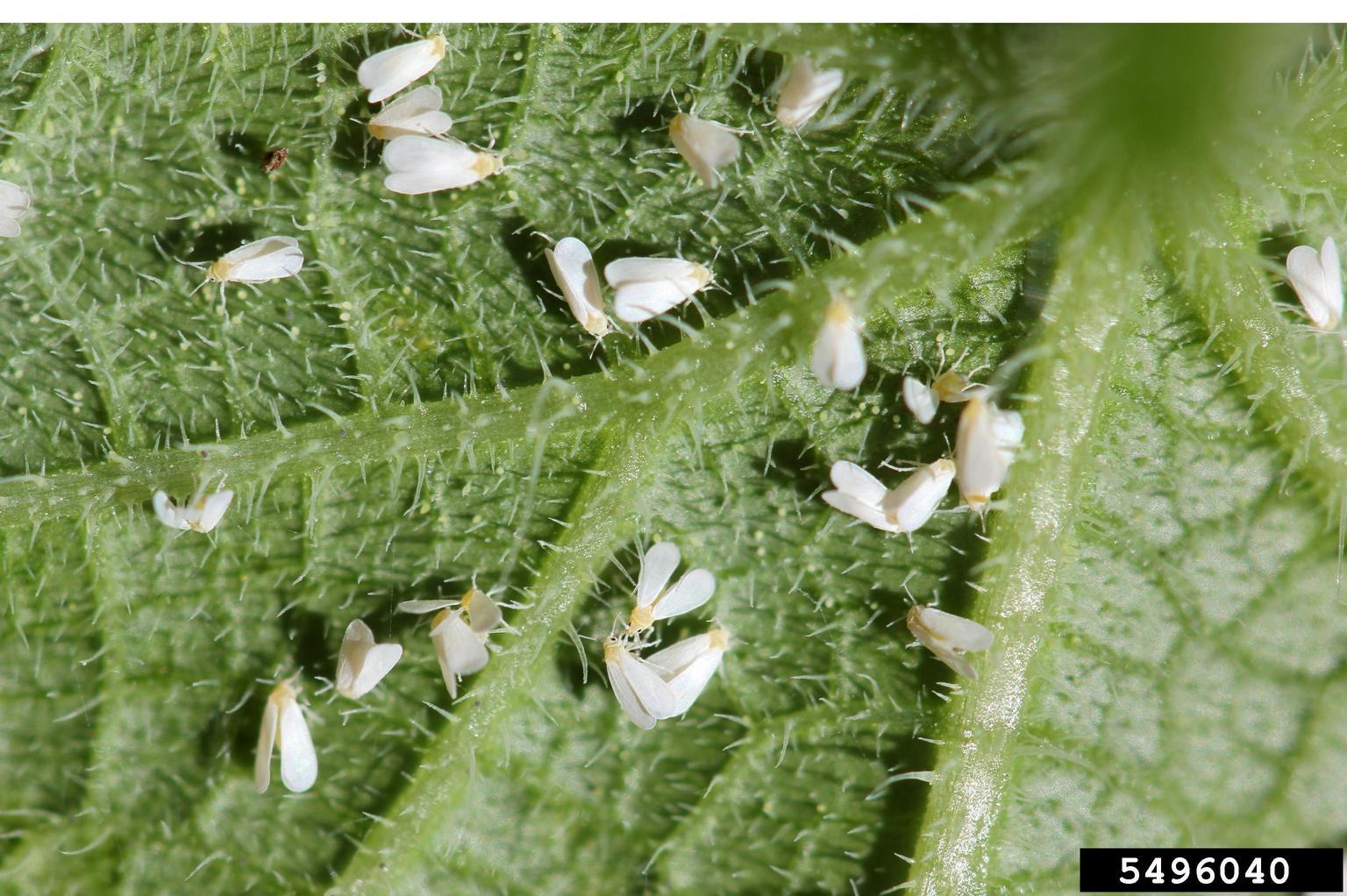About whiteflies
Adult whiteflies resemble tiny white moths. They are about 1/16th of an inch long, white, with four wings, and may be covered with a powdery white wax. The nymphs or immature whiteflies resemble flat disks on the undersides of the leaves and may or may not be covered with wax. Whiteflies injure plants by sucking plant sap. They excrete honeydew, which gives the plants a sticky appearance and supports the growth of black sooty mold. Heavy whitefly infestations can cause stunting, distorted, discolored leaves and a plant that appears unthrifty.
Check plants for parasite or predator activity. Parasitized whiteflies will appear dark in color. During the summer, parasites and predators often control whiteflies eliminating the need for insecticide sprays. If necessary, to control whiteflies on flowers or other herbaceous plants spray undersides of leaves with an insecticidal soap labeled for the plant in question. Be sure the plant and pest are on the label and follow directions very carefully.

Whitefly damage on Verbena. Photo: University of Maryland Extension

Adult whiteflies on verbena. Photo: University of Maryland Extension

Small ladybird beetle predator feeding on whitefly nymphs. Photo: John Davidson, University of Maryland
